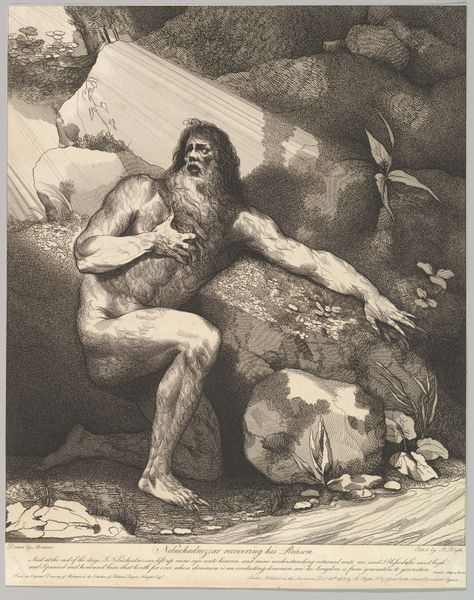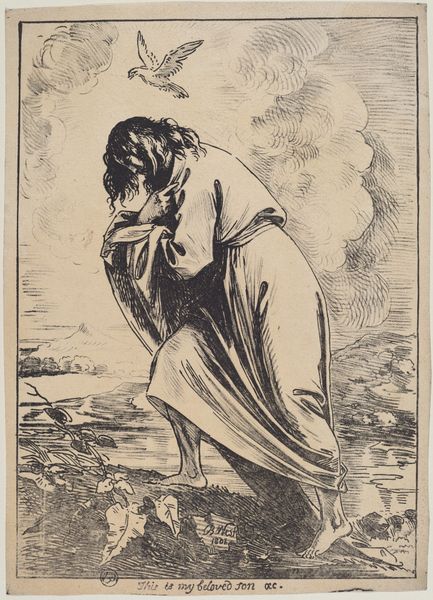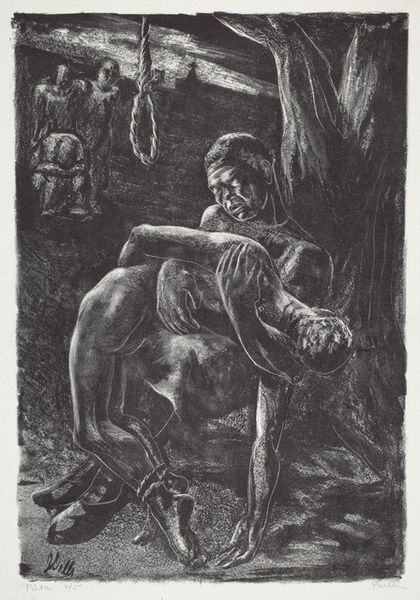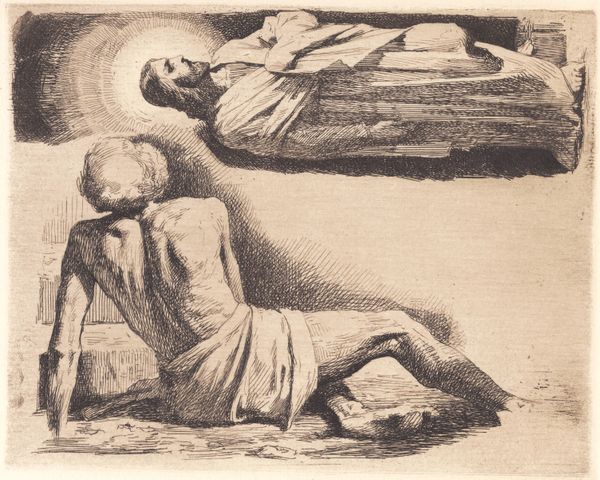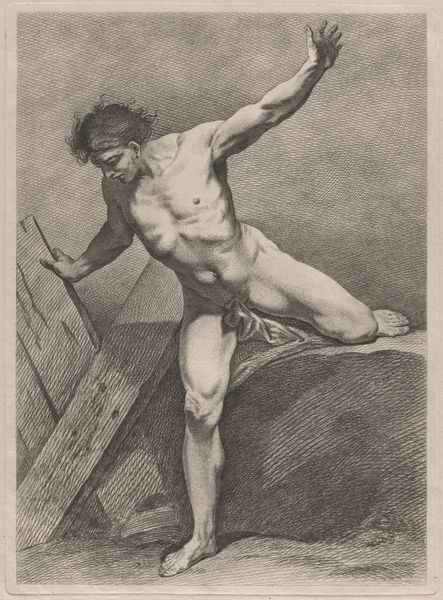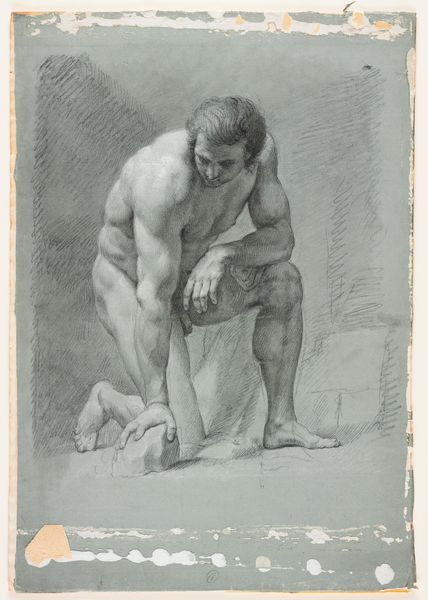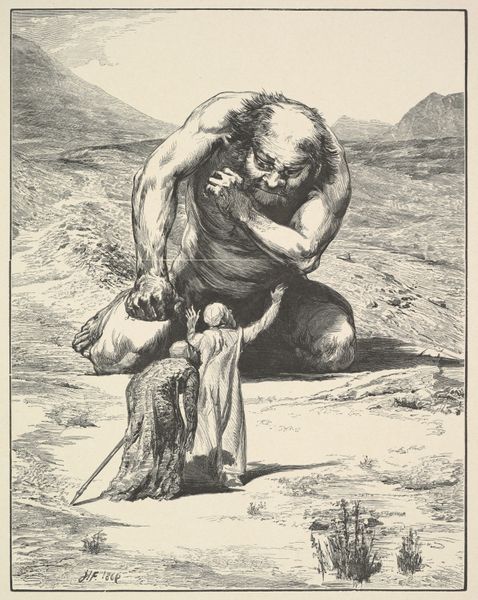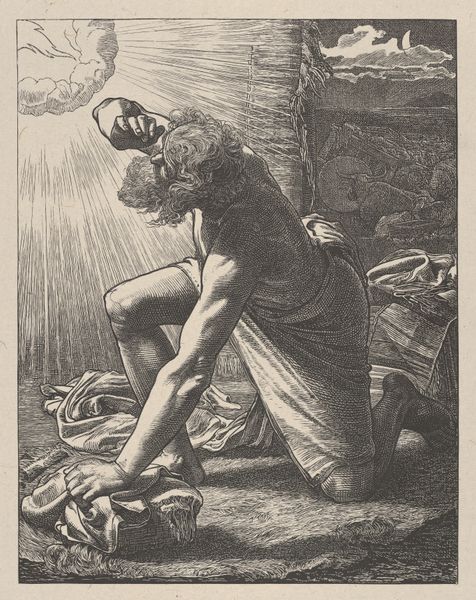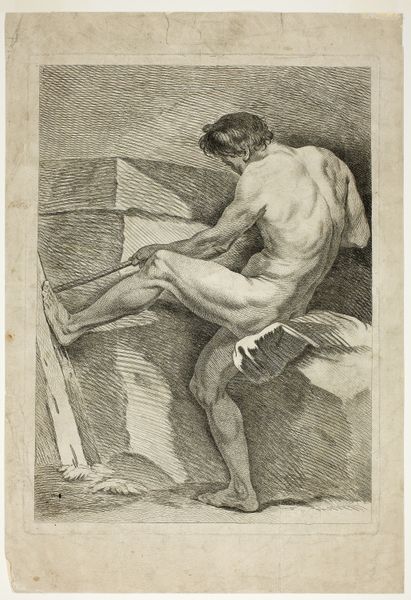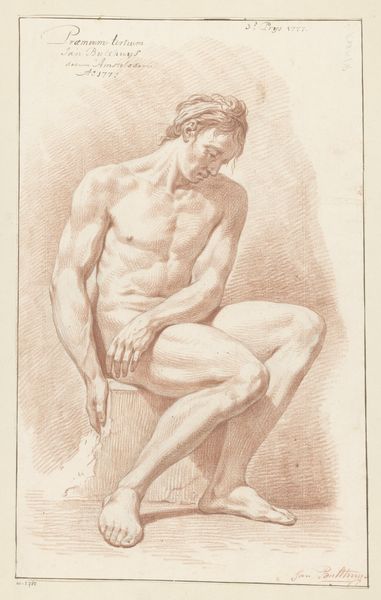
Edmond Dantes immediately after his escape from the Château d'If in February 1829 1846
drawing, pen, charcoal
drawing
narrative-art
pencil sketch
landscape
charcoal drawing
figuration
pencil drawing
romanticism
pen
portrait drawing
charcoal
history-painting
Copyright: Public domain
Curator: Gavarni’s charcoal and pen drawing from 1846 depicts "Edmond Dantes immediately after his escape from the Chateau d’If in February 1829". Editor: The Romanticism is palpable. He seems caught between despair and dawning realization, posed like a classical sculpture, yet with this raw, almost frenzied energy. Curator: Look closely at how Gavarni used charcoal to build the shadows. He created a study of textures that represent the raw physicality of escape. Dantes has just emerged from the sea, the artist renders a stark depiction of physical endurance that defines the figure's plight. We also notice the pen work, see how those rapid, fine lines define muscle and bone… Editor: And the symbolism! Water, a potent signifier for cleansing and rebirth is everywhere. He holds what looks like a knife in his right hand which symbolizes transformation as a cultural representation of masculinity, yet we see him looking upwards. Is it for forgiveness? Is it gratitude? Curator: Given the original Alexandre Dumas story, perhaps it points to his resolve, even the beginnings of vengeance? The blade represents a commitment to future action born of recent violence, however the work exposes a society marked by imprisonment and injustice. Notice that his clothes are rags. Gavarni implies poverty and distress within France’s prison system at the time, speaking to a certain degree of societal critique, what do you think? Editor: Interesting. I lean into the notion of it being the promise of a fresh identity emerging from a symbolic death and rebirth. He leaves the Chateau, this icon of oppression, to seek vengeance which the artist here makes reference to by having him look upwards almost in a prayer formation. Gavarni emphasizes the psychological dimension to suffering as this is more about his journey, I feel. Curator: It shows how layered visual art can be, doesn’t it? To think a few strokes with charcoal and pen can elicit such debate about freedom, imprisonment, social justice and how a lone individual can enact change. Editor: Exactly. An illustration teeming with human struggle depicted across one lone figure—quite powerful in its stark, grayscale tone!
Comments
No comments
Be the first to comment and join the conversation on the ultimate creative platform.
